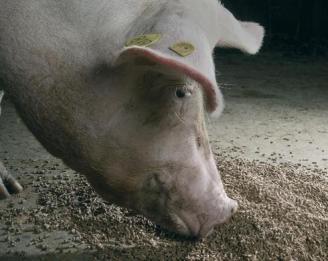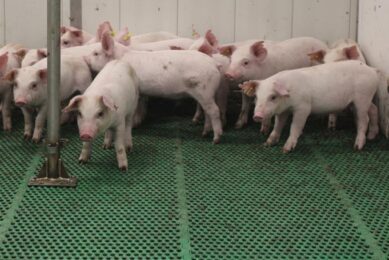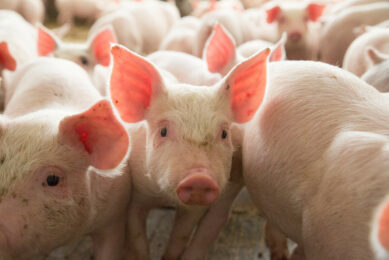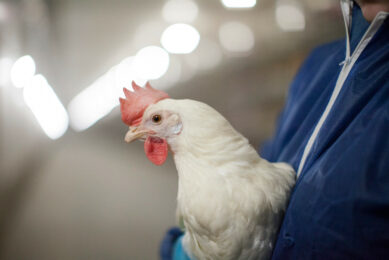Energy efficiency, environment and food safety

In order to meet the nutrition demands and environment requirements of future generations, a profound rethink of agricultural practices is unavoidable. Criteria like sustainability and energy efficiency will be taking increasingly important positions in the definition of animal feeds.
By Prof Peter Spring, Swiss College of Agriculture, Switzerland and Dr Jules Taylor-Pickard, Solutions Deployment Team Manager, Alltech
Global demand for pork has multiplied in recent decades, encouraged by growing affluence and nourished by fierce competition pushing all operations to increase production efficiency and thus reduce cost. As global demand will keep increasing and resources become more limited, the industry will have to push for another leap in efficiency. For example, the FAO has recently predicted that meat production in the year 2050 will be 470 million tonnes, an annual increase of almost 2% compared with today (Table 1). However, this increase in production will have to be done in a sustainable manner.
‘Sustainability’ will become more than a sexy word to be put on companies strap lines; the industry will have to add a tremendous amount of meat to the ‘sustainability’ bone. Modern technology and improved efficiency will make it possible to feed the rapidly growing global population in the future. However, the true challenge will reach far beyond just feeding the global population; we have to achieve this in a way that prevents the planet from overheating. Global warming is reality and even long-term skeptics and deniers are starting to realise and accept that this is human society’s primary challenge.
The pig industry as any other will have to limit the emission of green house gases per unit of output. Distinct to the cattle industry where methane will become a key issue, pork production will have to focus on minimising CO2 production and this can mainly be achieved by improving efficiency. Many farrow to finish operations are using 3 kg and more of feed per 1 kg slaughter pig sold.
By pushing the use of feed in the farrowing operation towards 40 kg per piglet weaned and for FCR in the finisher barn below 2.5, we can move an entire production chain towards, or below 2.5 kg feed per kg of slaughter pig. What does this mean for nutrition? We will have to feed herds which are reaching 30+ piglets per sow per year with limited feed intake capacity. This situation is further complicated over the concern that NRC standards do not meet the needs of the modern hyper-prolific sow, especially for minerals and vitamins. For example, there are large increases in mineral accretion over the last two weeks of gestation that are unlikely to be met by current feeding practices and diets.
This highlights a need to phase feed sows in gestation: not only increasing levels of feeding where possible, but also changing the diet density and nutrient specification/availability. There may be specific windows of opportunity for foetal programming during gestation: e.g., Se in early gestation, changing metabolic status to enhance muscle fibre development in mid-gestation and different nutrient supply in late gestation to enhance placental development as well as mineral supply. In this respect, nutrigenomics may play a specific role in identifying the fundamental changes that occur during gestation and helping to design strategies to enhance productivity.
Nutrient availability
Nutrient availability will be of particular importance in terms of covering the mineral and trace mineral needs of the modern sow. Regulation of mineral excretion, in particular P, Cu and Zn are becoming more stringent. A recent publication from the UK suggests a link between moderate copper and zinc accumulation and biodiversity of invertebrates in soil, and further scientific evidence will accumulate to fuel environmental regulations. There is no reason to supplement the entire trace mineral requirement to the sow through the premix. What we have to supplement is the difference between the requirement and what the dietary raw ingredients deliver. Uncertainties concerning their availability in the raw ingredients will force us to use highly available minerals, thus organic minerals in the future; a general move which innovative companies have already done years ago.
In the grower-finisher phase we can significantly improve feed efficiency by meeting the animal’s requirement every day as closely as possible. We will move away from phase feeding with two or three diets towards a system with continuous adaptation. Automated feeding systems which adapt the ratio of a low and high density diet continuously meeting the requirement as exactly as possible in every stage of production will become the norm. In addition to improving efficiency we will have to look at low impact ingredients. It will only be a matter of time before the Europeans will allow meat and bone meal back into the market, assuming consumer acceptance. The greenhouse impact of those materials will be much lower than for soy and there is no scientific reason today not to push for the sensible use of those materials. Sensible use will include high quality standards and most likely only cross species feeding.
Additional to energy efficiency, protein efficiency will become of key importance for efficient use of resources and to minimise ammonia emission as many countries have agreed to under the Goteborg protocol. This will require in particular, in dry sows and finisher pigs, to drive the crude protein (CP) content of the diets down and to start looking at all essential amino acids. Pure iso-leucine on the market would certainly help to further reduce dietary CP and advance N-efficiency. A nitrogen efficiency of 30% as is common in today’s grower-finisher operations will be no longer acceptable in the future. In general, the use of co-products will increase as recycling is becoming more important. Co-products with lower nutritional value will have to be made suitable for the high efficiency production systems with novel enzyme and processing technologies.
Recycled ingredients
A complex mix of more recycled ingredients will increase the challenge to guarantee food safety and thus will force the industry to run more stringent quality control and traceability procedures on the diets. In particular, very sensitive methods will increase the importance of low concentration, long-term toxins such as PCBs (polychlorinated biphenyls) and heavy metals which will force the industry to increase the frequency of analyses. A recent survey conducted by Alltech of over 200 inorganic mineral premixes and individual mineral samples showed an average of 21% contaminated with at least one heavy metal (lead, arsenic, mercury or cadmium; Table 2).
Furthermore, the microbial safety of products will expand much further beyond Salmonella. Organisms such as Clostridia, Campylobacter and Staphylococcus might follow. Overall, as an industry, we will need to dramatically improve and expand our quality control and traceability systems.
Health benefits
The consumer is increasingly more aware of not only how food is produced and food quality, but also the potential health benefits of consuming them. As such, the functional food market continues to be a dynamic and growing segment of the food industry, and the current global functional foods market is estimated to be US$763 billion, depending on sources and definitions. This market is expected to grow to US$167 billion by 2010 with current global growth rate averaging 14% annually (www.marketresearch.com). There are many ‘functional pork’ products currently available such as selenium- or omega-enriched meat, however these are still very much niche-type markets. A proportion of the consumer market will move towards ‘designer’ foods offering additional health benefits and some of the concepts will become a new minimal standard.
Animal health will take centre stage to improve efficiency and maximise product quality. Most likely the existing and new complex multifactorial diseases will challenge our herds and thus a top immune status will be an absolute must. A particular focus will be given to keep inflammation down and optimise gut health. It is already well established that these are important parameters to control, but we will develop novel strategies to achieve this.
Novel research technologies such as nutrigenomics are starting to play a key role in advancing our knowledge in these areas and in developing novel feed additives and holistic programmes to control a number of different areas simultaneously to achieve the final goal.
Personnel
Finally, and perhaps most importantly of all, personnel is a critical factor that we as an industry need to address. Limited numbers of young people are joining the industry and we are already seeing gaps in terms of trained stockpersons that are passionate and motivated to work with pigs. We will need to identify ways of encouraging ‘new blood’ to join us and give the appropriate training to work with the latest production equipment and computer technology in the production units.
The recent turbulent period across the global economy as a whole has forced us to re-assess our productivity and efficiency levels. We are in no doubt that those in the industry that survive the current crises will be ‘leaner and meaner’ when they emerge, and will be in a much stronger position to address some of the issues highlighted in this article. Above all, we need to remember that agriculture and pork production are highly innovative areas that should not only be profitable but sustainable, rewarding and fun in the long run.
Source: Pig Progress Volume 25 nr 9











